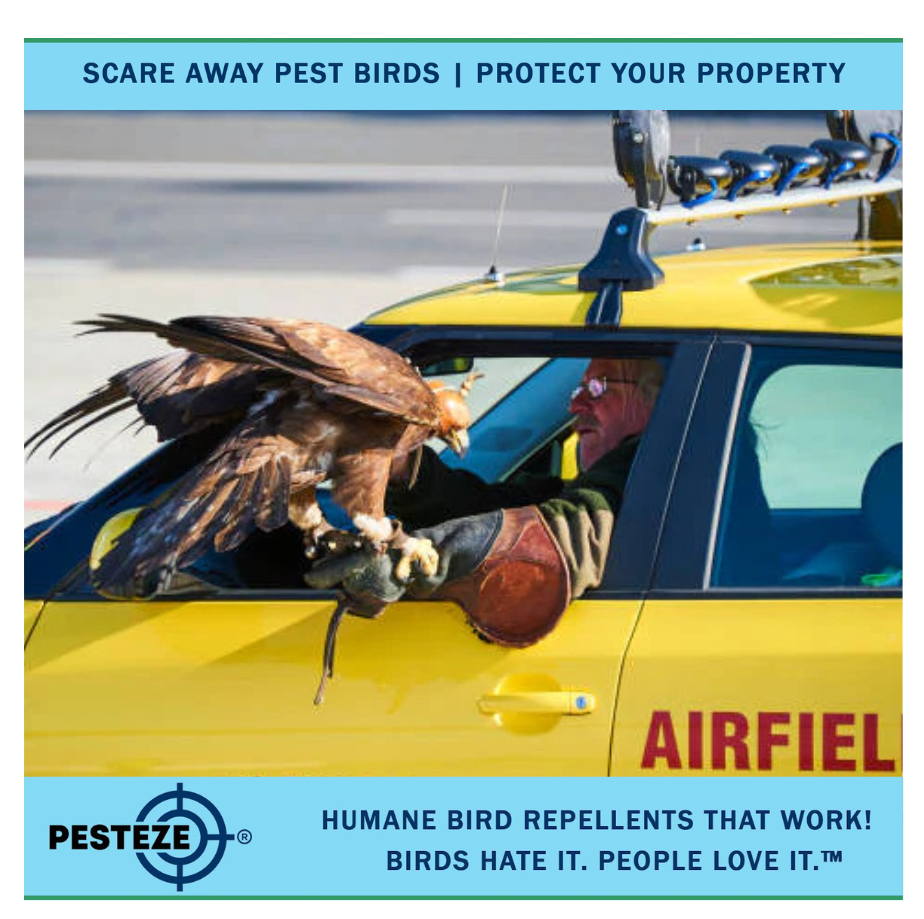ENSURE SAFE SKIES WITH EFFECTIVE BIRD DETERRENTS AT AIRPORTS!

ENSURE SAFE SKIES WITH EFFECTIVE BIRD DETERRENTS AT AIRPORTS!
SUMMARY
Birds pose a significant hazard to aviation. Learn about bird deterrents for airports, from sound devices to habitat management, that protect both birds and aircraft while ensuring safe operations.
FEATURES
- Use Ultrasonic and Audible Deterrents: Implement sound systems to scare birds away.
- Deploy Predator Decoys: Place decoys like hawks and falcons near runways.
- Install Laser Devices: Use laser beams to create a visual deterrent.
- Habitat Management: Modify airport grounds to make the area less attractive to birds.
- Use Bird Radar Systems: Track bird movements to prevent collisions.
- Integrate Falconry Programs: Train falcons to naturally deter birds from the airfield.
GUIDE DESCRIPTION
Birds and airports don’t mix well, as bird strikes can be dangerous for both birds and aircraft. Bird collisions with planes are a serious safety concern for aviation, potentially causing engine damage and endangering passengers. To minimize these risks, airports implement a variety of bird deterrents that help reduce bird presence around runways, taxiways, and airfields.
One of the most widely used bird deterrent methods at airports is the deployment of ultrasonic and audible sound devices. These systems emit sounds that are uncomfortable for birds, causing them to avoid the area. Audible deterrents often use recordings of predator calls or distress signals to make birds perceive the airport as a dangerous place to be. These sound devices can be placed strategically around the perimeter of the airport and near sensitive areas such as runways.
In addition to sound devices, predator decoys are highly effective. Airports frequently use decoys of predatory birds like hawks and falcons to scare off smaller birds. These decoys, when positioned near runways or hangars, give the impression that a predator is nearby, prompting birds to leave the area in search of safer grounds. It's essential to rotate the decoys or move them periodically to prevent birds from becoming accustomed to their presence.
Another advanced deterrent technology being implemented at airports is laser devices. Birds are highly sensitive to laser beams, especially at dawn or dusk when visibility is lower. Lasers can be used to direct birds away from specific areas of the airfield, without causing harm to the birds. The visual stimulus from the lasers disrupts their normal flying patterns and encourages them to move elsewhere.
Habitat management is also a crucial component of bird deterrence at airports. Birds are drawn to food and shelter, so modifying the airport landscape to make it less attractive can significantly reduce bird activity. This can include trimming or removing trees, managing water sources, and even using specific grass types that are less appealing to birds. Creating an environment that birds find inhospitable can deter them from nesting and foraging near runways.
Airports are also turning to technology to better monitor and predict bird movements. Bird radar systems allow airport authorities to track flocks of birds in real-time. By identifying where birds are most active, airports can coordinate their flight schedules and take preventative measures to reduce the risk of bird strikes.
Finally, some airports use falconry programs as a natural and highly effective bird deterrent. Trained falcons are released in and around the airfield to chase away other birds, leveraging the natural predator-prey relationship. This method is both humane and environmentally friendly, as it relies on nature to keep bird populations in check.
By combining these various techniques—sound devices, visual deterrents, habitat modification, and falconry—airports can ensure safer skies for both birds and airplanes. A well-rounded bird deterrence program not only helps protect aircraft but also minimizes harm to wildlife.
- Tags: Bird Control Guide
- Maanas Mehta


Comments 0